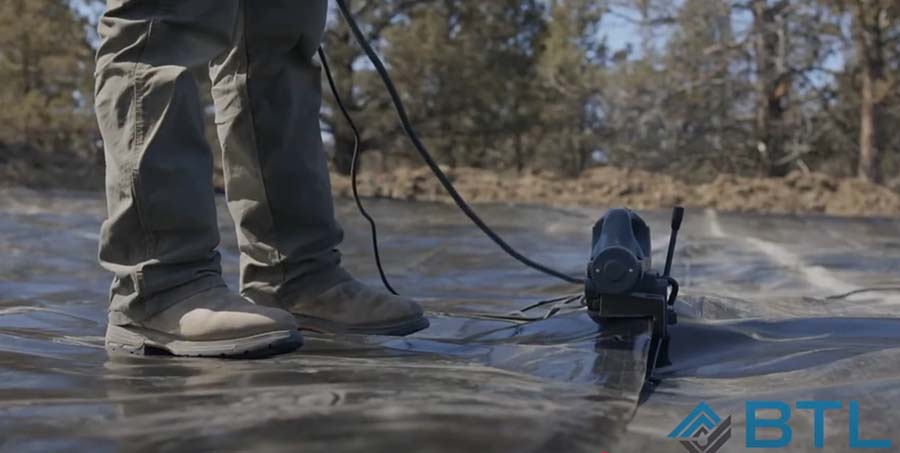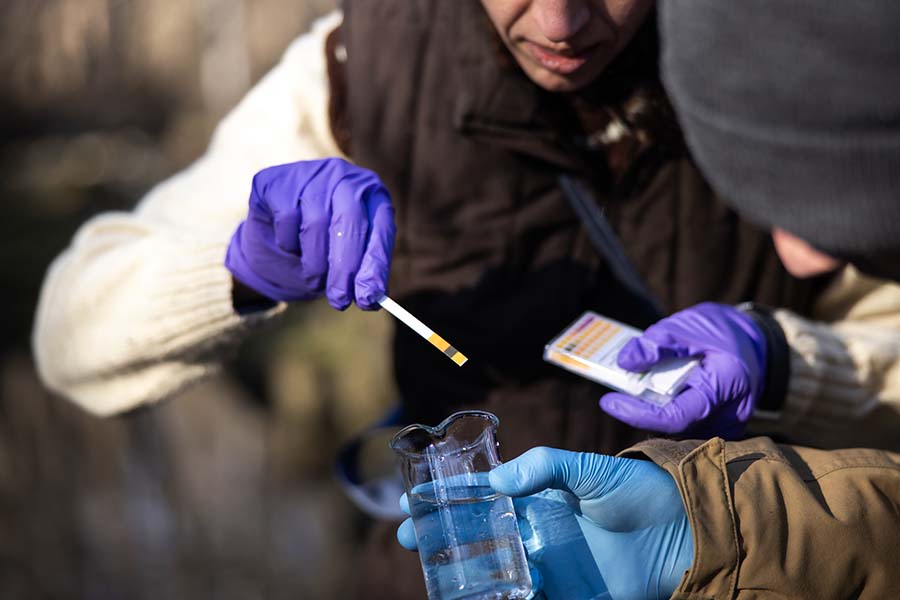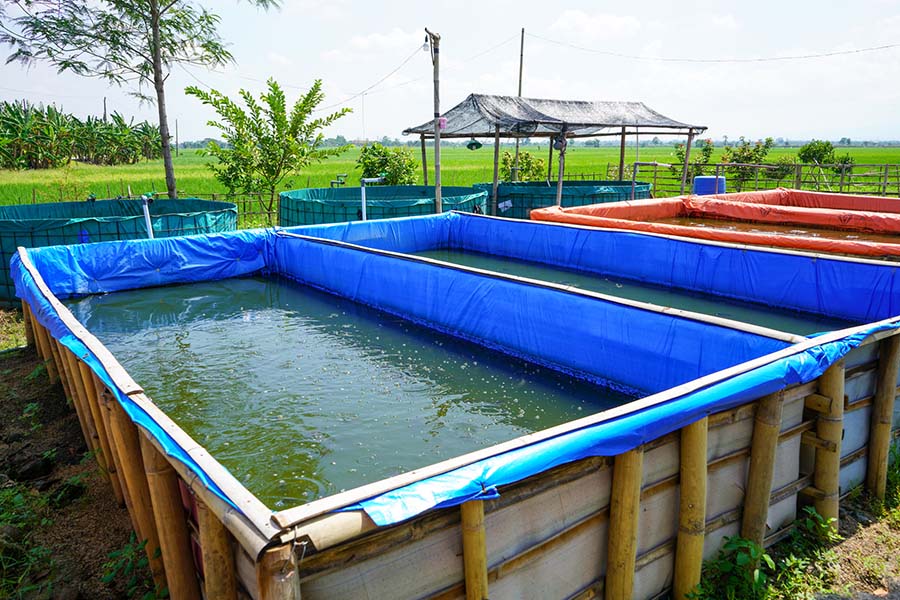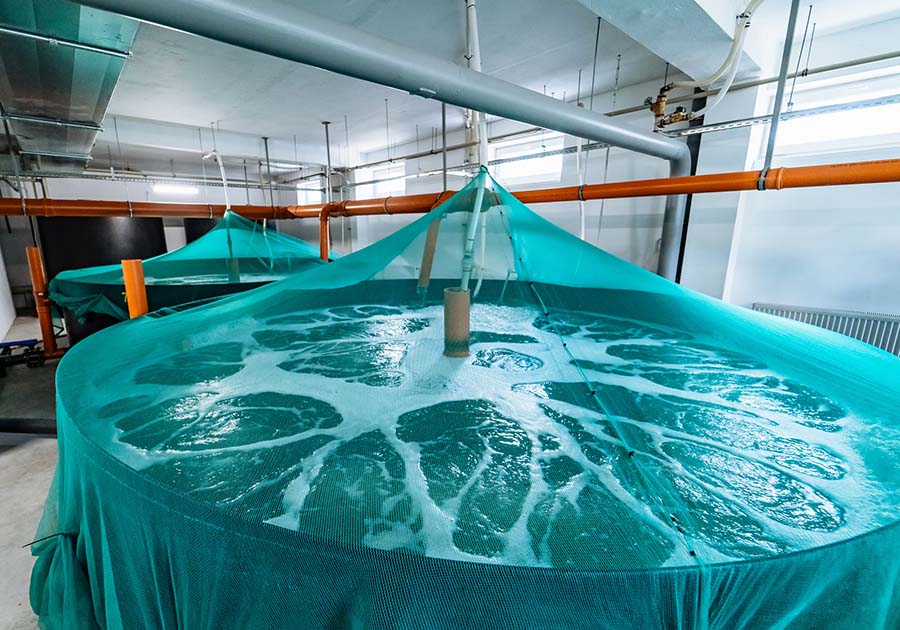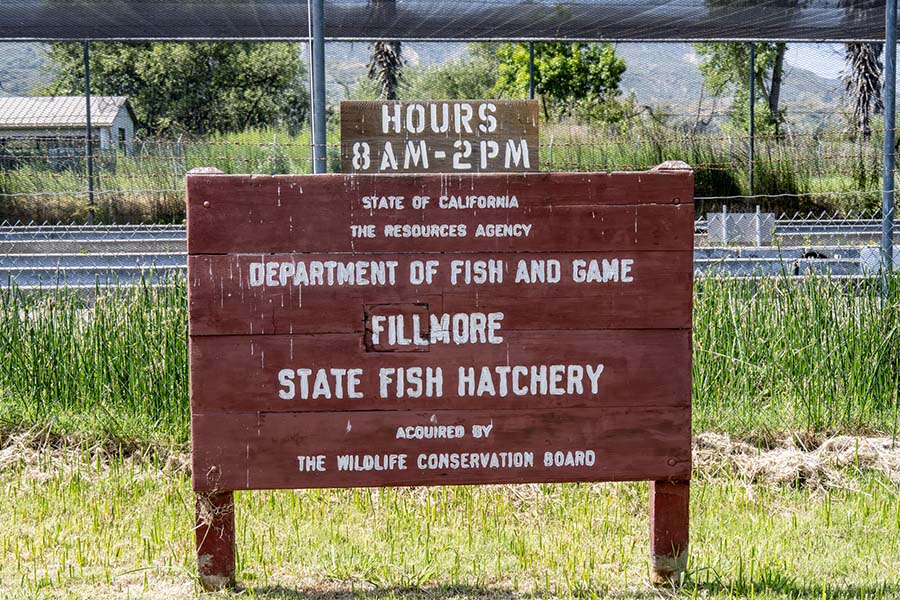Article Center
Real-World Proof
Do liners really help prevent disease, water loss, and risk in fish hatcheries? Examine some real-world case studies and see proof they make a real difference.
Getting It Right the First Time: Installation Quality Control
Don't let a bad installation ruin your hatchery! Our guide to QA/QC covers professional standards for seam testing and avoiding common points of failure.
The Chemistry of Control: Water Quality in a Lined Tank
Sudden pH crashes and ammonia toxicity can quickly wipe out your hatchery. Learn how to track alkalinity as an early warning system in lined tanks.
Biosecurity by Design
Pathogens are a constant threat for fish hatcheries. Is yours defensible? Learn how to design for biosecurity with smart layouts and liner-enabled sanitation.
Smart Engineering for Lined Systems
Does your hatchery design fight the environment? Learn how smart engineering for water flow in lined larval tanks promotes health and supports biosecurity.
A Pro’s Guide to Hatchery Liners
Think like an engineer, not a shopper! Our guide to fish hatchery liners covers key specs, from NSF/ANSI-61 safety to UV resistance and durability.
Mission-Driven Design: Engineering the Modern Hatchery
Don't let a standard fish hatchery hinder your mission! Learn how tailoring design and liner choice for conservation or maximum profit is the key to performance
The Bottom Line: Evaluating the Economic Benefits of Geomembrane Liners
Maximize your fish hatchery profits! Discover how geomembrane liners deliver a strong ROI through reduced costs, increased efficiency, and long-term savings.
How Geomembranes Help Prevent and Solve Four Common Pond Problems
Struggling with recurrent pond problems and reduced harvests? See how geomembranes can save your fish hatchery from water loss, contamination and disease.
How Geomembranes Help Prevent and Solve Four Common Pond Problems
Struggling with recurrent pond problems and reduced harvests? See how geomembranes can save your fish hatchery from water loss, contamination and disease.
Ensuring the Longevity of Your Geomembrane-Lined Ponds
Keep your fish hatchery running smoothly! Master practical geomembrane liner care: inspections, cleaning, and quick repairs – a must-read for every operator.
Leveraging Geomembranes for Enhanced Hatchery Operations
Unlock the full power of geomembranes in your fish hatchery! We’ll look at innovative uses for water storage, raceways, settling basins, safety, and more.
Building Your Hatchery: A Step-by-Step Guide to Geomembrane Installation
Ready to build your dream fish hatchery? Get a running start with our expert tips on geomembrane liner installation for long-lasting, leak-free ponds.
The Role of Geomembrane Liners in Water Quality Management
Crystal-clear water = thriving fry. Discover how geomembrane liners maintain the conditions your hatchery needs for maximum success, from egg to harvest!
Designing Healthy Ponds: Integrating Liner Considerations from the Start
Ready to avoid costly problems with your fish hatchery? Find out how early planning for smart liner integration creates healthier and more efficient ponds.
Why Liner Choice Matters in Fish Hatcheries
What's the #1 factor in long-term fish hatchery success? Hint: It starts with your liner. Could you be overlooking this critical element? Let’s find out!
Designing a Better Fish Hatchery
Aquaculture has a history spanning centuries, but the methods used have been relatively basic for most of that time.
Environmental Factors for Fish Hatchery Design
The environment around the fish hatchery plays a large role in its success or failure.
Challenges of Maintaining Steady Water Quality in a Fish Hatchery
Fish hatcheries rely even more heavily on steady water quality than fish farms, due to the sensitivity of fry and fingerlings.
Why Do Ponds, Hatchery Tanks, and Raceways Need Lining?
If you’re not planning to build any in-ground ponds for your fish hatchery, you may wrongfully assume that there’s no need for flexible liners at your facility.
Rigid Tanks vs Custom Designs with Flexible Liners in Fish Hatcheries
One of the biggest benefits of choosing flexible liner materials over rigid tanks or cast concrete is customization.
Choosing a Flexible Liner for Fish Hatchery Uses
It’s clear that flexible liners have an important role to play in the modern hatchery, whether it’s for lining a ditch to prevent runoff from ruining water quality or for protecting an in-ground pond.
To Drain or Not to Drain Hatchery Ponds
Hatchery ponds, much like any intensive fish farming pond, are unique in that they are regularly, completely harvested.
Retrofitting Older Hatchery Ponds and Raceways with New Liners
There are hundreds of aging and old hatcheries around the country that must shrink their production goals each year as individual tanks and ponds are shut down for leaking and water quality issues.




